The marketing industry is dynamic and susceptible to change. By its very purpose, it has to be able to fluidly adapt to new technologies and the shifting focus of consumers.
But now there’s a new change on the horizon that will shake up digital marketing, along with many other industries: blockchain. In 2016, we saw ad-blocking begin to be the norm. And now, in 2017, we’re seeing the rise of blockchain.
It’s already making waves in the financial world, and if it’s not already on your radar, it should be. The technology of blockchain won’t just apply to finance; its uses are far more wide-reaching than can be neatly packaged in a box. For example, it has been used for ethical fishing in Indonesia and people getting married.

I’m not saying that it’s going to cause major disruptions within the next few months. By its very definition, it needs mass adoption to do that, and we’re not quite at that stage yet. My prediction is that you’ll see the changes filtering in over the next few years, starting small but gaining traction in a snowball-like effect.
If you’re already abreast of all things blockchain and Bitcoin, feel free to skip these next two sub-headings. If not, read on!
Related Content: How Ad Blockers Are Changing the Online Advertising Landscape in 2017
So What Is Blockchain?
Blockchain has numerous uses, but when it comes to what it actually is and how it works, it becomes a lot more technical. At its heart, blockchain allows information to be stored and distributed, but not copied. It is the ultimate peer-to-peer network.
Many years ago, music-sharing software Napster pioneered the way for the first of its kind – peer-to-peer file-sharing networks – and, despite being illegal, paved the way for companies like Spotify and Skype. And now, almost like the culmination of all this, is blockchain.

Source
Blockchain is like a public ledger that everyone can see and is shared amongst all its users. All the people using the blockchain keep the ledger up to date. It’s stored in a chain-like configuration, where the transaction history is stored in ‘blocks’ and can only be built upon, not changed.
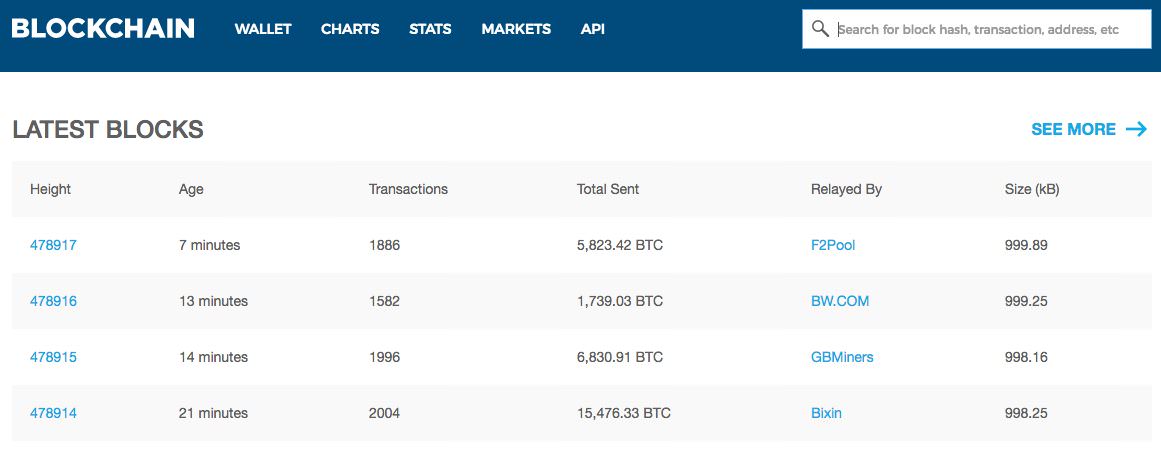
Source
To change the history – say, if someone were trying to hack it – the ledger would have to be changed in the majority of participants. With the number of people already using it, that’s near impossible. Imagine how secure it’ll be when there’s a mass uptake of it.
By having this digital ledger recorded on everyone’s computer around the world, it becomes decentralized. This is unlike a bank, where transactions are stored privately and are managed only by the bank. Blockchain is outside of any bank or government, which means there’s no central authority setting regulations on it.
So you can say goodbye to the middleman who takes a fee (i.e. banks or other financial institutions).
In a report for the World Government Summit, ConsenSys gives a comprehensive summary of the main advantages of blockchain:
- Blockchain has no center, meaning everything is the same (it’s decentralized)
- Transactions are protected by the unchangeable nature of the ledger, offering greater cybersecurity
- Nobody owns or is in charge of the blockchain as a whole
There are many ways that blockchain is used by smart and innovative companies, but the very first one – and the one you’ve probably heard of most – is Bitcoin. This is where cryptocurrencies come in.
Cryptocurrencies: The Major Users of Blockchain
A cryptocurrency is a fancy word referring to all the new digital currencies that use blockchain as a base. They aren’t physical coins or cash but rather are stored in one’s ‘digital wallet’. Think of it almost like a foreign currency. Indeed, the value of it is still affected by supply/demand and world happenings, like government policy.
But let’s take Bitcoin as an example. About this time four years ago, in 2013, a single Bitcoin was worth about $7. Today? It’s worth just over $2,800 – a figure that is constantly changing.
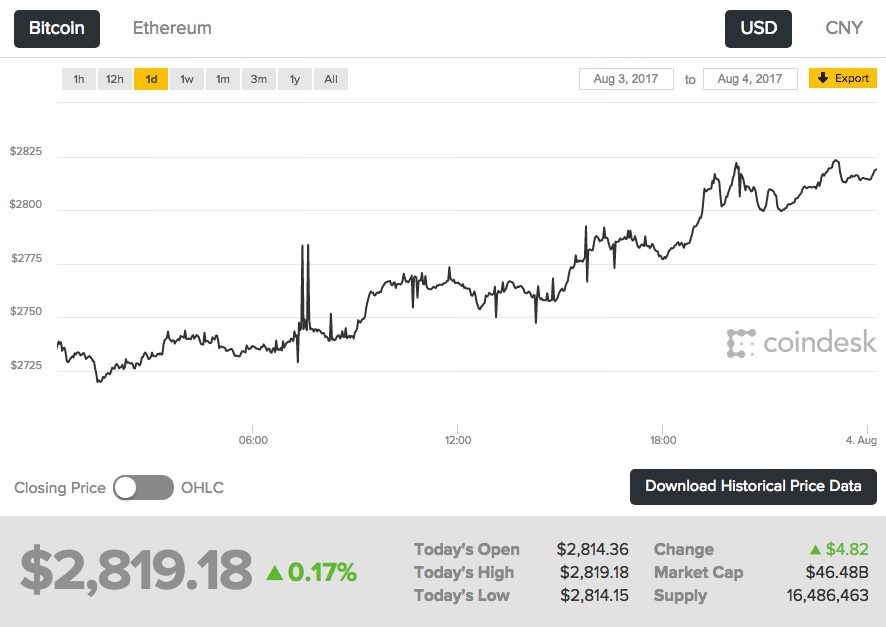
Source
Just imagine…if you’d bought a few Bitcoins in 2013, you’d be swimming in money now. But Bitcoin isn’t the only one; there are plenty of other cryptocurrencies to choose from including Litecoin, Digitalcoin, Peercoin and Ripple, to name a few.

Source
This incredible surge shows just how much disruption is taking place in the finance industry right now. But what about digital marketing?
Related Content: How Mobile Apps Are Reshaping the E-commerce Industry
Blockchain and Digital Marketing
It’s important to remember that blockchain is more than just Bitcoin. By linking it to that one thing, you’ll lose sight of the big picture and the impact it will have on all industries. Now that we’ve gone through all the complex tech info, let’s apply this to digital marketing.
Below are some of the areas in which you’ll begin to see changes.
Eliminate the Middleman
The middleman has become part of the process (for the time being) in the world of digital advertising. However, the companies investing in advertising are only getting half the value, due to the intermediaries involved. Blockchain can solve this by creating much better value for ad campaigns.
In finance, cutting out the middleman means eliminating the need to use banks, since a financial institution’s main function is storing and transferring your money reliably. In marketing, these central authorities could be Google or Facebook, where they work by ensuring the reliability and dependability of your ‘transactions’, or ad campaigns.
So instead of communicating indirectly with site owners when you want to publish an ad, you could communicate directly. Blockchain comes into this by easily proving that users, along with click-through data, are real, which leads to website owners and those interested in advertising no longer needing a mediator to sign an agreement.
What it all comes down to? A tidy decrease in extra costs and an increase in your profit margin.
Learn More: What Is Digital Marketing?
Building Up Trust with Transparency
One of the problems that many companies, particularly large ones, face is trust. People are skeptical of many things, from where their food comes from to the factory conditions of where a product was made. It’s a marketer’s job to build trust in the product to be able to sell it successfully.
And the quickest way to gaining that trust? Transparency.
This strategy was used by Walmart when it teamed up with IBM on a project to make their supply chain process more transparent. The aim was to use blockchain to digitally trace where their pork products came from, starting at the retailer’s base in China. This boosted the confidence of consumers in Walmart.
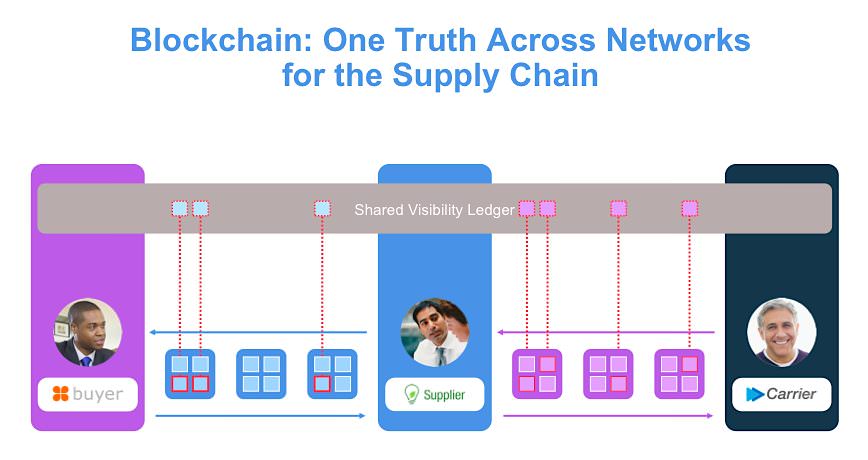
Source
Storing processes through blockchain make them tamper-proof and allow for a level of transparency not yet seen.
Public Accountability
Corporate social responsibility (CSR), in terms of marketing, comes into play as something that consumers must take a company’s word on. There is no sense of accountability when it comes to CSR initiatives like sustainable practices.
Blockchain can be used to create digitized contracts, wherein these promises are made public and the company is then held accountable.
Consumer Identity and the Reversal of the User Model
The way of the future is to balance advertising with consumer identity concerns.
There are already several services out there that offer the user full control of their identity and transaction history, like uPort, MetaMask and Keybase.
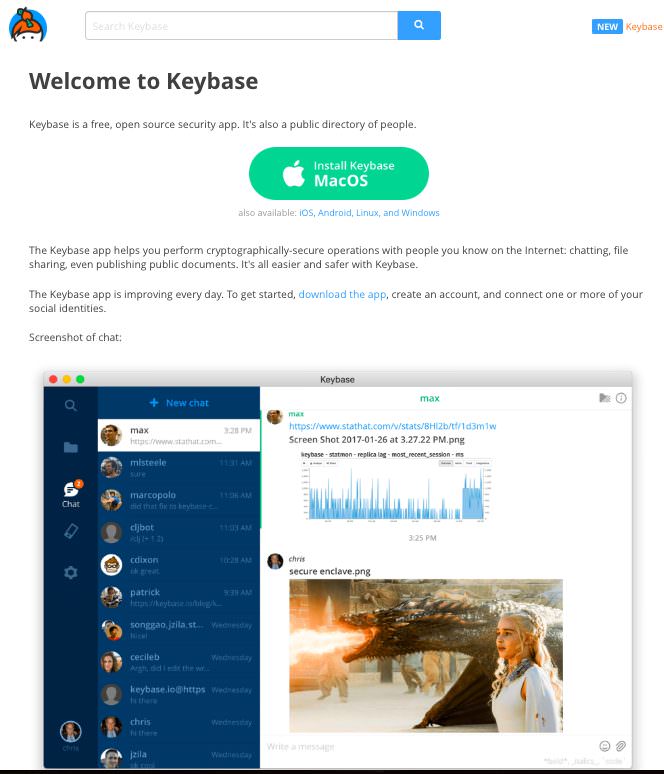
This means that marketers will have to earn the customer’s permission in a way that’s completely different than before:
The customer has the power to charge the marketer for access to their data. Click To Tweet
It’s an entirely different way of doing things, but it would provide marketers with a unified customer profile. Right now, the process for gaining a customer profile is very different. It comes in dribs and drabs from all around the web from third parties: Google, Facebook, etc.
So we’ve established that in the future, the marketer could end up paying the user to consume their advertising material. Amanda Gutterman, CMO of ConsenSys, gave a really great example of this in a recent radio show interview. She said that when a brand approaches a user to subscribe to its weekly sales newsletter, the customer can respond with the price that they’ll have to pay her for that info.
This would all be done in micropayments, so the price of reading the e-mail could be .003 cents. This payment would then go through via a cryptocurrency, like Bitcoin. This way, marketers will be consistently challenged to prove the value of their relationship to the customer and find new ways to engage with them.
The Benefits for Branding
From a basic starting point, simply having a Bitcoin-friendly payment method shows how forward-thinking your company is. Or, in another simple step, using blockchain to formalize digital negotiations between companies can also work in your favor.
Not only is this more secure from a business perspective, but from a marketing point-of-view it helps add to your branding. A company that embraces emerging technology is one that is edgy and innovative, one that other brands might want to copy.
Indeed, you could create a whole PR strategy around this and gain coverage on it! Coverage like that will put you smack-dab in the middle of timely conversations and create curiosity and intrigue around your brand. There is the opportunity to produce a lot of informative content around this topic and become a go-to expert.
But how could it work for your business? The first step is learning how to source Bitcoins in order to decide whether or not this is the right fit for your business.
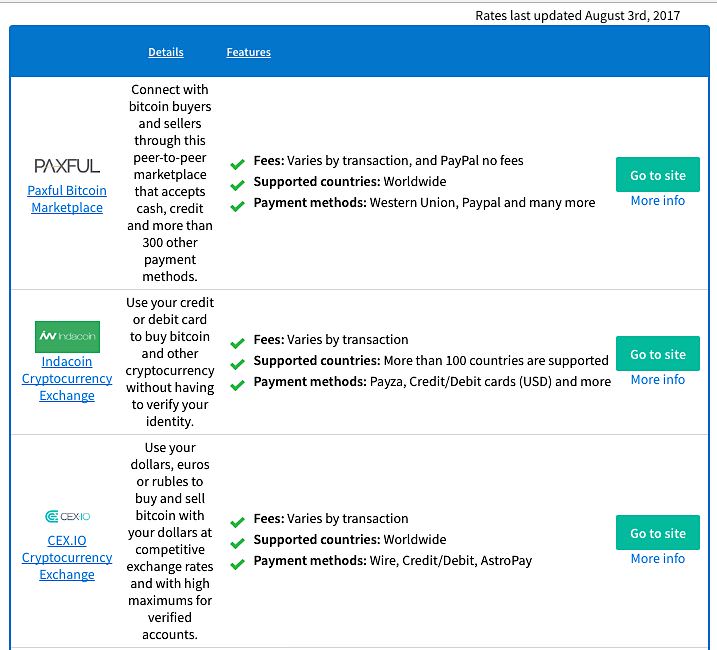
Source
Bitcoins are already being accepted as a form of payment by hundreds of companies, from Subway and Victoria’s Secret, to a San Jose professional soccer team. All you need in order to accept Bitcoins is a digital wallet and a ‘pay with Bitcoin’ button at the checkout.
Real-World Applications
There are many companies out there that already making use of blockchain for marketing purposes in a variety of ways. Here’s a quick roundup of the most innovative ones.
Brave and the Basic Attention Token
The Brave browser is the next step in ad-blocking software: because it’s able to block trackers and intrusive ads, it’s a much faster browser, and you can even choose to allow ads that respect your privacy.
It’s this software that’s introducing the Basic Attention Token (BAT), with their aim being to bring the digital marketing model back to the simple framework of users, advertisers and publishers, without the middlemen taking a cut and causing it to be an inefficient and opaque marketplace.
In this video, Brendan Eich (who created Firefox, JavaScript and now Brave) believes that we’re paying up to $23 a month per person to view ads, with our bill going towards bandwidth spent on ads and trackers. The whole aim of the BAT boils down to this:
Why should we be paying to view ads when advertisers should be paying us? Click To Tweet
Therefore, Brave can anonymously track which sites are of interest to you. It works like a cycle: publishers receive tokens when ads are viewed and so do the users who chose to receive and view the ad. From that, the users can choose to donate the tokens back to the publishers they support.
All of this is done using blockchain, making it private and reliable, and providing some insight into the future of advertising.
Babyghost and VeChain
These real-world cases don’t just cover advertising – there are innovative ideas coming into play in marketing as well. Babyghost is a fashion brand that, at Shanghai Fashion Week, worked with blockchain platform VeChain to provide a link between the digital and fashion worlds. VeChain is a service that uses blockchain to verify if an item is authentic or not.
Customers could scan the tag of the Babyghost item and see if it’s genuine or not and could even see a ‘story’ of where it came from and who had previously modeled it. This has created a one-of-a-kind feel to each product and allows the customer to create a personal connection with it.
Used in this way, we can see blockchain tapping into ‘authentic’ advertising that doesn’t even seem like marketing.
On to the Future
For marketers innovative enough to jump on it, the possibilities are endless. Despite blockchain’s close association with Bitcoin, it’d be a mistake to let that overshadow its uses in the digital marketing industry. A mass take-up of this may be a few years in coming, but having a strategy already in place will allow you to be ahead of the curve.
